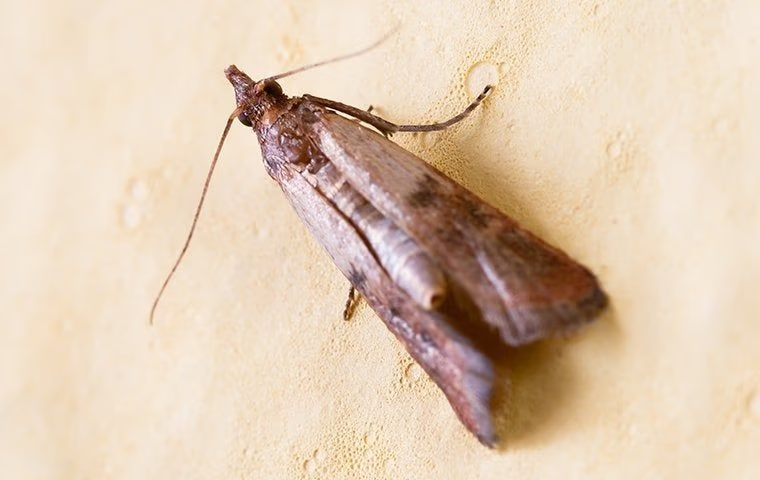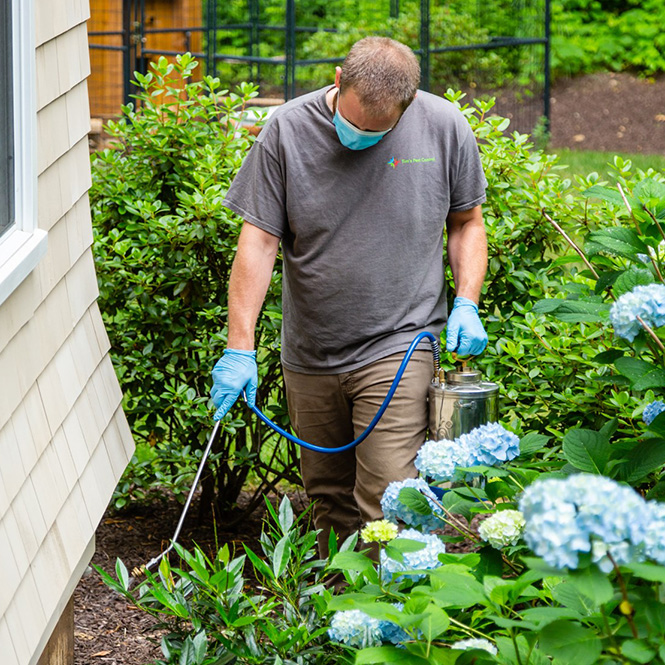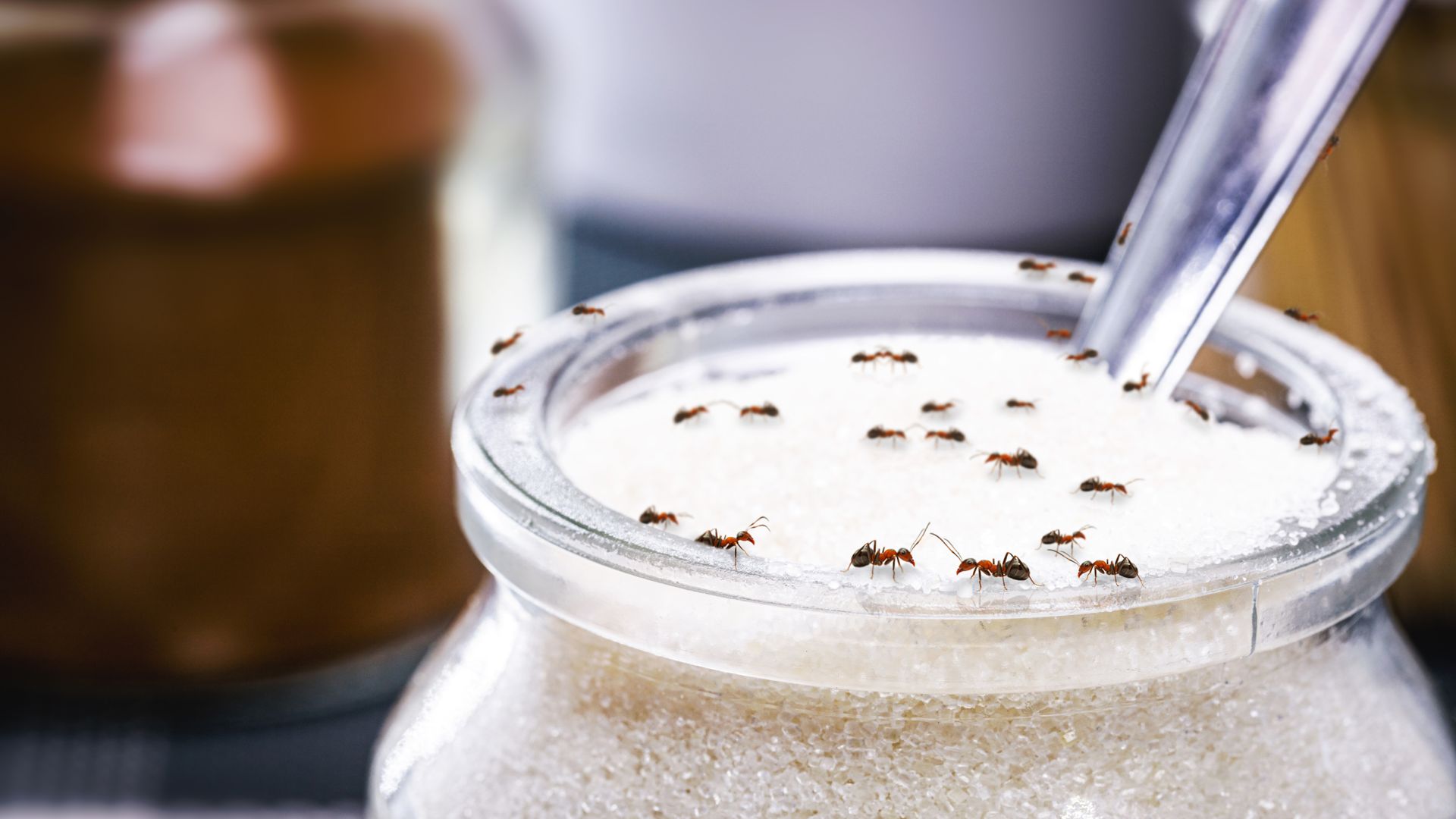
Norwalk, CT Moth Control
Understanding Moths: What You Need to Know
Adult moths and their larvae regularly find their way into our Connecticut homes. Moths are closely related to butterflies. Below are some differences between the two:
- Moths have threadlike or feathery antennae compared to the straight, club-tipped antennae on butterflies.
- Moths also have a more stout body compared to butterflies.
- Adult moths are typically smaller than adult butterflies.
- While at rest, butterflies usually fold their wings back in a vertical position, while moths flatten their wings against their bodies.
- Moths are mainly active at night, while butterflies are active during the day.
When moths find a way into our homes, it is not the adults that are most problematic but their larvae. Adult females will lay their eggs on a suitable food source like a piece of fabric or stored food product. When the larvae hatch, they begin feeding, causing damage to whatever they are using as a food source. Finding a way to keep these pests out of your house is always best; learn more about our reliable home pest control programs in Norwalk

Are Moths Harmful to Your Home?
Moths are typically more destructive than they are dangerous. Two moths in our area of the country are the most common; the clothing moth and the pantry moth. Their descriptive names tell us what they damage; clothing and other fabrics items and dry goods like cereals, flour, and dried pasta.
Identifying the Cause of Your Moth Infestation
When moths are living outside, they don't pose problems for people. It is only after they find their way into our homes on their own or when homeowners accidentally bring them inside that moths become an issue.
Lights attract adult moths, so it is extremely common for our home's exterior lights to attract them to our homes. Torn screens, open windows and doors, and worn-out weatherstripping provide adult moths with entry points.
People regularly and unintentionally introduce moth larvae or eggs into their homes on potted plants, contaminated dry goods purchased from the store, or secondhand fabrics or upholstered furniture.
Common Areas Moths Infest in Your Home
Inside our homes, moth activity will be wherever their preferred food source is stored. In the case of pantry moths, they are most likely to be infesting kitchens, pantries, and other food storage areas. In addition to our homes, these moths are a common problem in places like grocery stores, pet stores, and restaurants.
Clothing moths prefer to hang out in areas of a home that are dark and have high humidity. You'll most often find them infesting clothing, blankets, rugs, and other items stored in basements, closets, and attics.
Effective Solutions: How to Eliminate Moths
If you are looking to implement regular pest control services that ensure that your Connecticut home becomes and stays pest-free, look no further than Tim's Pest Control. We are a local, family-owned, and operated company that understands each home and family has its own unique pest control needs, and we cater to those needs.
Whether you are looking for residential or commercial pest control services to be performed twice a month, seasonally, or somewhere in between, we can help! Don't try to tackle problems with moths on your own; partner with us and take advantage of the experience and knowledge of our trained professionals!
How can I prevent moths in the future?
You can do several things in and around your home to prevent problems with moths:
- Eliminate common entry points by repairing torn screens, fixing loose screens, and placing weatherstripping around windows and doors.
- Turn off outdoor lights when not needed to avoid attracting moths to your home's windows and doors.
- Inspect plants that have been outside for caterpillars or moths before bringing them inside.
- Store clothing, blankets, and other fabric items in plastic storage containers with locking lids.
- Store dry goods in plastic or glass containers with locking lids.
- Use dehumidifiers to reduce humidity levels in your home.
If moths have become a problem in your home, Tim's Pest Control can help! Call today to learn more about our effective pest control solutions!



Hear From Our Happy Customers
At Tim's Pest Control LLC, your satisfaction is our priority! See for yourself what our customers have to say about working with us.
-
"Tim is great!"
He was very responsive and thorough in communicating and following through.
- Michael -
"I definitely recommend him."
Very knowledgeable and reliable. It solved my problem and we worked in a long-term solution. I definitely recommend him.
- Castalia -
"Knowledgeable, quick, and reasonably priced."
I had an inspection done today and the guys provided pest control (attic and crawl space) and patched the holes outside.
- Glen -
"It was good to have a pro check it out."
These people answer the phone and show up! I was getting my house treated for mice.
- Paul -
"We highly recommend Tim!"
Tim even turned down a higher priced service that we didn't need! You could just sense his honesty and integrity.
- Marc -
"I know who to call if the need arises."
They offered advice free of charge, walked my property, and inspected my home.
- Jonathan -
"I would trust him implicitly with all my pest needs."
He was exceptionally honest and reasonable and I would trust him implicitly with all my pest needs. Thank you, Tim!
- Jackie -
"Tim is terrific! Give him a call, you won't regret it!"
Not only is he an incredibly nice guy, but he is very knowledgeable about pests and offers reliable, fast communication.
- Katharine



